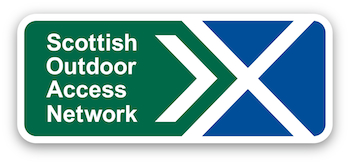Electric Bikes and Access Rights
An ‘electrically assisted pedal cycle’ is not a ‘motor vehicle’ as long as it meets various criteria, and consequently it can be ridden within the exercise of the Scottish access rights, (eg. on shared paths) – as well as on roads and bike lanes if the rider is over the age of 14..
Electrically Assisted Pedal Cycles (epac) fall under the “Electrically Assisted Pedal Cycle Regulations 1983 S.1.1168” – Regulation 4 contains the requirements / criteria for an EAPC The key requirements to fall into this category are:
- the bike must have pedals that can be used to propel it
- the electric motor should not be able to propel the bike at more than 15mph
- the bike (including its battery but not the rider) must not be heavier than 40 kilograms (kg) if it’s a bicycle, or 60kg if it’s a tandem or tricycle
- the motor shouldn’t have a maximum power output of more than 200 watts if it’s a bicycle and 250 watts if it’s a tandem or tricycle
- the bike must have a plate showing the manufacturer, the nominal voltage of the battery, and the motor’s power output
the more definitive references are:
The Electrically Assisted Pedal Cycle Regulations 1983, S.I. 1168. – Regulation 4 contains the requirements/criteria for an EAPC.
The Road Traffic Regulation Act 1984 s140 (1)(c), and the Road Traffic Act 1988 s189, both state that an eapc ‘..shall be treated as not being a motor vehicle’.
The Road Traffic Act 1988 s32 provides that an eapc shall not be driven on a road by a person under 14, and to do so is an offence.
The Department for Transport published a Factsheet in Oct 2005 titled ‘Electrically Assisted Pedal Cycles in Great Britain’, which provides a definitive summary.

